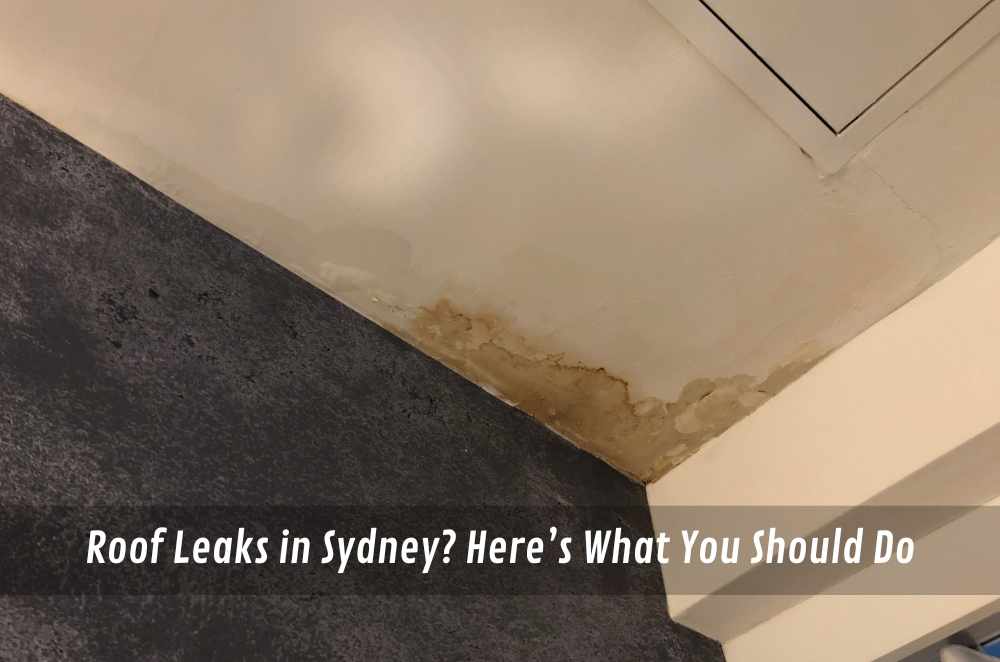
It started with a single drip in the hallway. Within an hour, it was a steady tap-tap-tap into a mixing bowl I’d frantically placed on the floor. Sydney’s weather doesn’t mess around — and neither should you when it comes to roof damage. I called in roof leak repair professionals the next morning, and what they found shocked me: water had been pooling silently between layers for weeks.
When your ceiling starts weeping, you don’t have time to waste. But before you panic, take a breath — and read on. Fixing a leaky roof fast isn’t just possible, it’s manageable if you follow the right steps.
How to recognise a roof leak early
Leaks aren’t always obvious. Sometimes, they appear as a faint yellow stain or a bubble in the paint. Other times, they hit you with a full-on downpour in the lounge room.
Look out for:
Dark or discoloured ceiling spots
Peeling plaster or bubbling paint
Mould or mildew smells near corners
Dripping noises, even if intermittent
Catching these early can make all the difference, especially in older Sydney homes that mix modern builds with dated roofing materials.
Some homeowners mistake internal plumbing issues for roof leaks, so if you’re unsure, check if the problem aligns with rain patterns. If it only leaks during storms, the roof’s likely the culprit.
Why Sydney homes are so leak-prone
Sydney’s blend of heatwaves and sudden coastal storms can wreak havoc on roofing. Rapid temperature changes cause tiles to expand and contract, eventually loosening over time. Add blocked gutters or poor flashing installation, and the risk skyrockets.
That’s where proactive upkeep comes in. Official government resources like the roof leaks emphasise the importance of maintenance, not just repair.
A scheduled inspection could save you thousands.
What to do when your roof starts leaking
Once you’ve spotted a leak:
Move valuables and electronics away
Use a bucket or container to catch water
Poke a small hole if a ceiling bubble forms — relieve the pressure
Don’t climb the roof unless it’s safe and dry
Call professionals as soon as possible
They’ll usually start with an emergency tarp job to prevent further damage while assessing the root cause.
Depending on the severity, temporary fixes might include sealants or patching, but a licensed roofer will always inspect structural elements and underlays — things you can’t see from the surface.
How to choose the right roofing expert
Not all roofing companies are created equal, and when water is coming through your ceiling, you don’t have time to trial and error. Look for contractors who:
Are fully licensed and insured
Offer written quotes and warranties
Can show before-and-after examples of their work
Respond promptly to emergency calls
Word of mouth matters too. Ask neighbours or check Google reviews — the right team can mean the difference between a quick patch and a long-term fix.
How much does it actually cost?
Here’s the thing: roof leak repairs can range from $200 for a quick fix to well over $3,000 if the structure is compromised. My own repair — which involved replacing flashing and two tiles, cost about $650 all in. Worth every cent.
For a breakdown of typical expenses, check this detailed overview of the cost of fixing leaking roof. It’s a handy guide if you’re budgeting for repairs.
And remember: delaying only makes it more expensive.
DIY or professional help?
Suppose you’ve got a minor sealant issue or a slipped tile and know your way around a ladder, maybe. But 9 times out of 10, what looks like a small issue has bigger complications underneath.
Professionals use infrared moisture mapping, pressure tests, and drones — stuff most of us don’t keep in the shed. More importantly, they’re insured. That matters. And from a safety perspective? Roofs get slippery fast. One misstep can turn a simple fix into a trip to the hospital. Leave it to the pros unless you’re confident, equipped, and covered.
Even a short fall can cause long-term injuries, especially on concrete or paved surfaces. Professional roofers also spot early signs of structural damage most homeowners overlook. Plus, their work usually comes with a warranty, giving you peace of mind that a DIY fix can’t offer.
How to stop leaks before they start

You don’t need to wait for water to come crashing through the ceiling. These steps can seriously reduce your risk:
Clear gutters regularly, especially after storms
Trim back trees near your roofline
Look for broken tiles or loose flashing
Schedule a roofing inspection every 12 months
Want to go deeper? This piece on common roof repairs is a great read — it outlines the warning signs and solutions that are easy to overlook.
Also worth noting: if you’re installing solar panels or other rooftop tech, have the roof assessed first. A lot of leaks stem from poorly sealed penetrations.
Final thoughts
Roof leaks are one of those issues you can’t ignore — because the longer you do, the more damage they cause. But handled early, they’re more manageable than most people realise.
That first drip I saw? It could’ve led to sagging joists and mould. Instead, I made one call and avoided thousands in long-term damage.
Whether you’re a homeowner or investor, roof health is non-negotiable. Don’t wait for things to get worse — deal with it fast.
Prevention is the best protection. A proactive approach not only saves you money, but it also protects the structural integrity of your entire home. And in Sydney's climate, that extra vigilance pays off.





Write a comment ...